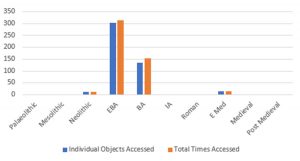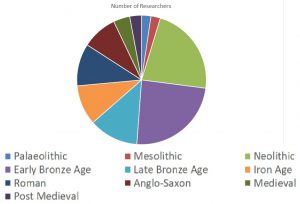It is now a year since we began our Wealth of Knowledge project, funded by the Arts Council Designation Development Fund. The project aims to:-
- Enhance the collections with new knowledge and understanding of over 10 years research on the collections.
- Make this new information public by publishing the enhanced records on the museum’s online database and updating gallery displays.
- Develop a new process to streamline the updating of records from future academic research
- Identify the gaps in our collections that haven’t received a significant amount of research interest, and develop ways to highlight these in a research agenda to attract future research.
Despite the challenges bought about by Covid-19, a great deal has been achieved in the last year. Our Researcher Officer, Wil Partridge, was appointed, and his MODES training was delivered on-line using Zoom. Largely working from home, Wil has made contact with most of the researchers who have visited the two museums over the past ten years to research the collections, and we now have copies of their PhD theses and publications.
So far, the project has identified 590 individual objects accessed 688 times, resulting in 781 MODES records being updated, with significantly more detailed information. These 'enhanced' database records include more comprehensive descriptions of the individual objects, 250 new photographs, and in some cases, and most importantly, a whole new understanding of the use and significance of the objects themselves.
In addition to updating the MODES database with the results of all this research, Wil has also recorded a number of details about what objects are being accessed and what methodologies are being used. In addition to accession number and methodology, he is also recording how many times an object has been accessed, its material, object type, site, parish, context and archaeological period. This will enable the museum to accurately quantify how different aspects of the collections are being used when creating a future Research Agenda.
As expected, the results reveal that the museum’s early Bronze Age collections are accessed most often – the finds made from the early excavations of the barrows located in the Stonehenge and Avebury WHS. By reviewing the research that has been undertaken on collections over the past ten years, it has been possible for the museum to identify the under-researched areas of the collections, eventually to then promote them as possible areas of future enquiry to post-graduate students. We hope this will include new topics, focussing on the Iron Age, Roman, and pre-Neolithic collections.
Next steps…….. getting the new collections information online; reviewing the collections of Salisbury Museum, progressing seminars with our colleagues in academia to inform a Research Agenda for the archaeology collection going forward; making a plan to integrate the results of this research into existing museum galleries and displays.
Got to the Wealth of Knowledge project page to find out more, including hearing from some of the researchers accessing our collections.

More about the project

Objects by period researched over the last 10 years.

Almost 50% of researchers access the Neolithic and Bronze Age collections

